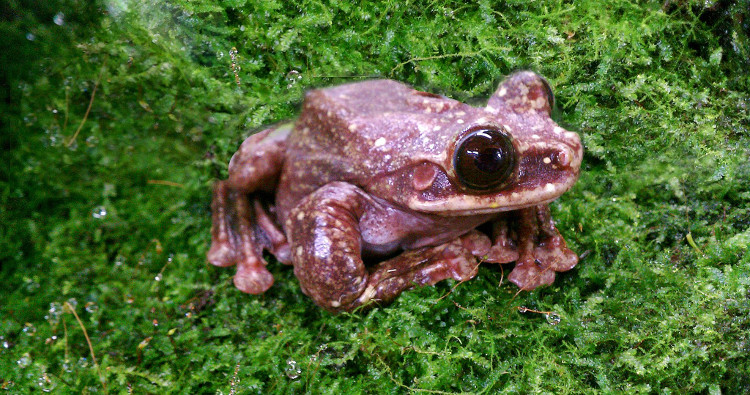The most "lonely" frog on Earth has died, bringing with it the hope of an entire species.
Toughie is the name of a famous frog, known as the last individual of the Rabbs frog species, whose scientific name is Ecnomiohyla rabborum. Its skin is brown with small spots, which can be glided by large webbed feet. The frog, described as "handsome" on his Wikipedia page, has won the hearts of several film directors and racers.
The United Nations had planned to post pictures of Toughie at its headquarters in New York City in 2014, as part of a campaign to raise awareness of the sixth mass extinction event, a period that has already changed. warned by scientists.
Toughie is "an icon of the extinction crisis," says National Geographic. The frog died on September 26 at his home in the Atlanta Botanical Garden, where he had lived since 2005.

The Last Rabbs Frog.
The extinction of any species is a tragedy, with knock-on effects, impacting not only fragile ecosystems but also directly affecting human life. And Toughie's death serves as a reminder that there are many other species that are slowly being wiped out "before we even know they exist," writes Mark Mandica, who studies amphibians and mammals. named his son "frog".
Scientists initially did not identify Toughie's species, but in 2005, a team of researchers went to the center of Panama to quickly collect living animals because of a genocidal epidemic at that time. on amphibians sweeping this region.
"It's likened to firefighting," Mandica told the National Geographic expedition.
The Rabbs frog is not thought to have survived the disease, which is linked to climate change. This has posed a serious problem for the world's food populations. In Panama alone, the disease caused the extinction of at least 30 species of frogs. Like the Rabbs frog, many animals are disappearing but are just being discovered.
"We had very little opportunity to study Rabbs frogs in the wild before the outbreak, only knowing where they were and then where they disappeared," said Mary Pat Matheson, president of the Atlanta Botanical Garden. with the Journal-Constitution.
Toughie was rescued from Panama and taken to the Botanical Garden, where the frog lived alone in the most favorable conditions until his death.
Another Rabbs frog, known in captivity, also male, died at the Atlanta Zoo in 2012.
We are in the early stages of bad times when the number of animals dwindles and then disappears like the extinction of the dinosaurs 65 million years ago. At the current rate of extinction, at least one in six species could be wiped out from the Earth by 2100. This number could rise to three to four species in the next century.
There have been stories of some species' uncanny survival in the face of this crisis. For example, a rare deer, thought to be extinct in Afghanistan, was found decades later to be alive despite facing war and instability. In the United Kingdom, the Elm tree, thought to have disappeared, was found "hidden in a field" in a garden of Queen Elizabeth II.
But these stories do not reflect the reality that many species have been lost. Just in the past week, there has been news about a species of zebra that is also on the verge of extinction. The Plowshare tortoise, native to Madagascar, is expected to be sighted only within the next two years.
Toughie's death once again reminds them that there are many species of frogs that are threatened with extinction.
Amphibians are one of the most endangered animal classes on Earth (along with reptiles, amphibians are species with a extinction rate 10,000 times faster than other species). ), according to a 2015 study.
Frogs have been found to be particularly vulnerable. In a study by John Alroy of Macquarie University in Australia, it was concluded that more than 3% of all frog species have disappeared, the majority starting in the 1970s.
"Hundreds more species will disappear forever over the next century," the study added.
Just as the spread of a disease that killed frogs, scientists point to climate change as the main cause of the decline of frog species. Cold-blooded species have thin skin, amphibians are especially sensitive to changes in temperature, air humidity and water quality. Climate change has also led to an increase in infectious diseases affecting frog populations worldwide.
"Global warming is destroying amphibians," warns biologist J.Alan Pounds from 2006, "and this is what causes enormous damage to biodiversity if we are to do not act soon".
- Poor dog malnourished with only skin and bones left, starving by the side of the road and miraculously recovered
- The image of the rescue team bravely fighting against time to free the poor dog trapped in the underground maze made everyone unable to control their emotions
- His pain or disability is no reason to diminish his extraordinary enthusiasm and will to live






